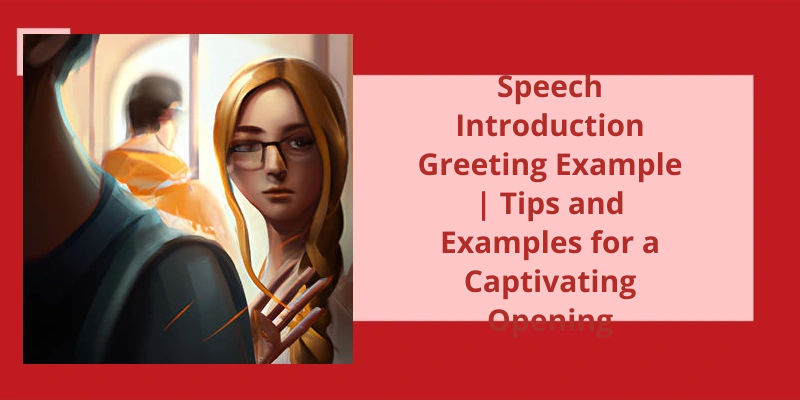What Are the Five Greetings?
Greetings are the foundation of any conversation, and it’s important to know the various ways to greet someone in English. The most basic greeting is “hello,” which is suitable for almost any situation.
For more formal situations, using time-specific greetings such as “good morning,” “good afternoon,” or “good evening” is appropriate. These greetings not only acknowledge the time of day but also show a level of respect and professionalism. They can be used in both personal and professional settings, whether you’re meeting someone for the first time or seeing them again.
When meeting someone for the first time, it’s polite to express your pleasure at making their acquaintance. Saying “its nice to meet you” or “its a pleasure to meet you” is a gracious way to start a conversation. These greetings can also be used when reuniting with someone you havent seen in a while or meeting someone in a new setting.
If you’re seeing someone again after a period of time, it’s appropriate to acknowledge the previous meeting. Saying “its good to see you again” is a friendly way to show that you remember the person and appreciate their presence. This greeting can be used in a variety of contexts, whether you’re meeting a friend or a colleague.
Finally, another casual and friendly greeting that’s gained popularity in recent years is “whats up?”. This phrase seeks to ask how someone is feeling or what’s happening in their life.
Whether you’re meeting someone for the first time or seeing them again, knowing how to greet them properly is crucial for building a positive and respectful relationship. Using a variety of greetings shows your versatility and adaptability in different social situations. So, next time you greet someone, try to mix it up and use a different greeting to keep the conversation fresh and engaging.
Cultural Differences in Greetings: Exploring How Different Cultures Have Unique Ways of Greeting Each Other and How to Navigate Them Respectfully
- Bow in Japan and South Korea
- Kiss on the cheeks in France and Spain
- Nod in India and Thailand
- Handshake in the United States and Canada
- Hugging in Brazil and Mexico
- Saluting in many military cultures
Greeting others with respect and formality is an important aspect of school culture. In addition to standard greetings like “Good morning,” schools often have unique phrases or customs for student speeches and assemblies. Here, we’ll take a closer look at some of these special greetings and what they involve.
What Are the Unique Greetings for Speech in School?
In schools, there are unique ways of greeting each other, especially during speech presentations. The traditional way of greeting in school is to say “good morning” to everyone present. For instance, students would start their speech by addressing the respected principal, teachers, and fellow classmates. This greeting conveys respect, which is essential in creating a conducive learning environment.
In addition to that, students may use greetings that are specific to the occasion or event. For example, when giving a speech during an environmental awareness day, the speaker may start the speech by greeting everyone with “Namaste” (an Indian greeting) or “As-salamu alaykum” (an Islamic greeting) and then proceed to talk about the importance of environmental conservation.
For instance, in Japan, students bow to their audience to show respect when greeting during speech presentations. The bow is a traditional Japanese greeting and shows that the speaker acknowledges the audience.
Other ways of greetings include a warm welcome message, greetings specific to the occasion, and greetings specific to ones culture or tradition.
The Significance of Greetings in Promoting Diversity and Inclusivity in Schools
Greeting people from diverse backgrounds is important in promoting diversity and inclusivity in schools. It shows respect for different cultures and creates a welcoming environment for all students.
When it comes to social interactions, greeting people in a friendly and polite manner is an essential aspect of human communication. In English, there are various ways to greet people, whether it’s a simple one-word greeting or a more formal phrase. However, knowing the appropriate time and place to use these greetings can make all the difference in communicating effectively. In this article, we’ll take a closer look at the different ways to greet people in English and explore the nuances of using these greetings in different social settings.
What Are the Greetings of Speech in English?
Greetings are an essential part of communication that sets the tone for a conversation, whether it’s a formal or informal one. The English language provides a wide range of greetings that can be used in different settings, including social, professional, academic, and formal occasions. These greetings range from simple one-word greetings to more formal ones that require a degree of protocol.
In these situations, it’s fine to use a relaxed tone and even customize your greeting based on your relationship or familiarity with the person.
Another essential aspect of greeting people in English is the use of titles, such as Mr., Mrs., Miss, or Ms. Using titles when addressing someone can be a sign of respect and formality, especially when meeting someone for the first time. In a professional setting, titles should be used to address superiors, colleagues, and clients.
Beyond the use of titles, it’s also important to respect cultural norms and social customs when greeting people. For instance, in some cultures, it’s customary to shake hands upon meeting someone while in other cultures, a bow or a kiss on the cheek is more common. It’s important to understand these customs to avoid causing any offense.
Understanding the context, setting, and cultural customs can help you choose the right greeting for each situation. Whether it’s a formal or informal setting, showing respect and professionalism through your greeting can help set the tone for a successful conversation. So, next time you meet someone, take the time to consider your greeting and make a great first impression.
Examples of Greetings in Different English-Speaking Countries and Regions
This article explores how people greet each other in various English-speaking countries and regions through examples. It aims to showcase the cultural diversity in greetings and emphasize the importance of social etiquette when communicating with people from different backgrounds.
Proper etiquette in any social situation often involves acknowledging and greeting others politely. The same applies to public speaking, where a friendly and respectful introduction can set the tone for a successful presentation. One common example of greetings in speech is the opening lines of a speaker where they introduce themselves and their topic to the audience. In this article, we will explore different examples of greetings in speech and their importance in effective communication.
What Is an Example of Greetings in Speech?
Greeting someone properly is an essential part of any conversation, whether it’s in a formal or informal setting. It sets the tone for the interaction and creates a positive first impression. In a speech, a greeting can help the speaker establish a connection with the audience and make them feel welcome.
After acknowledging the audience, the speaker might thank them for having them. This shows gratitude and appreciation for the opportunity to speak and can help establish a friendly rapport with the audience. It also sets a positive tone for the rest of the speech.
The next part of the greeting is introducing oneself. This is important because it gives the audience context about who the speaker is and why they’re qualified to speak on the topic. By providing their name, the speaker humanizes themselves and makes the audience feel more connected to them.
Finally, the speaker might preview the topic or theme of their speech. This gives the audience an idea of what to expect and why they should listen. It also helps the speaker stay focused and organized throughout the speech.
Source: What’re the different types of greetings for a speech?..
Starting a speech may seem daunting, but with the right approach, it can set the tone for a successful presentation. From thanking the organizers and audience to making a shocking statement, there are plenty of effective ways to begin your speech. Read on for 15 different strategies, plus bonus tips to elevate your opening even further.
How Should I Start My Speech Greeting?
Starting a speech or presentation can be tricky, as it sets the tone for the entire presentation. Good introductory remarks will engage the audience and create interest, while a poor opening will lose the audiences attention. Therefore, it’s essential to start with a well-constructed and thoughtful greeting. There are various ways to greet the audience, from thank-you remarks to personal acknowledgments.
One approach is to thank the organizers and audience for their time and attendance. This is often the most straightforward and expected approach, but it’s also an excellent way to show gratitude and set the tone for the presentation. Thanking the audience and organizers for their presence is even more impactful in front of a large audience, as it emphasizes the importance of their commitment to attend.
Another effective greeting method is to start with a positive statement or complementary remark. Highlighting a bright spot in the audiences or organizations recent history will put them in a more receptive state of mind, and create a positive atmosphere in the room. Similarly, complementing the audience on their professionalism, expertise or background will demonstrate your respect for them, and help to build trust.
Alternatively, you can begin your speech by referring to current or historical events, especially those relevant to the topic of your presentation. This method is useful as it links the presentation with current events or significant past events, uncovers the relevance of the issue and illustrates the importance of the topic. Recounting specific details, especially those that create an emotional tie with your audience, will set the stage for your presentation to have a more significant impact.
You can also refer to a well-known person or celebrity, someone that your audience will recognize, and who shares their interests. This method is useful as it establishes a common ground with the audience and can generate extra interest in the topic. Famous quotes from notable figures can also be used to underscore relevant concepts and themes, adding to the strength of your opening statement.
A recent conversation that you’d with someone the audience knows can also be an engaging way to start your speech. By presenting this information to the audience, you can create a personal connection, demonstrating that you understand their concerns or interests. Asking questions or stating controversial opinions during your opening remarks is also a useful method as it creates a dialogue with your audience and prompts them to think.
Lastly, you could opt to make a shocking statement or statistic relevant to your presentation. This method can instantly grab the audiences attention and get them eager to learn more. However, it’s crucial to balance the shock value with appropriate sensitivity and tact, so as not to offend the listeners or detract from the central message of the presentation.
How to Engage Your Audience Throughout Your Speech
To keep your audience engaged throughout your speech, it’s important that you use a variety of techniques. Start by asking questions or making provocative statements that will grab their attention. Use stories or anecdotes to connect with your audience on a personal level. Make eye contact and use hand gestures to emphasize important points. Use visuals like slides or props to help illustrate your points. And finally, be passionate and energetic in your delivery to keep your audience interested and engaged.
As you prepare to engage with your audience, it’s important to start off on the right foot with a proper greeting. Whether you’re delivering a speech, leading a seminar or hosting an event, knowing what to say can set the tone for a successful and memorable experience. In this article, we’ll explore the best ways to greet your audience and make a strong, positive first impression.
What Is the Best Greetings to Audience?
As a speaker or host, the way you greet your audience can make a big impact on how they perceive you and the event you’re hosting. It’s important to start on the right foot and create a positive atmosphere for everyone involved. When choosing your greeting, it’s important to consider the type of event you’re hosting and the audience you’re addressing.
One of the most commonly used greetings is “Good morning/afternoon/evening, everyone.”. This is a safe and professional choice that can be used for almost any type of event. It shows that you’re respectful of everyones time and acknowledges the time of day. It’s also a good way to break the ice and set a friendly tone for the event.
Another option is to use the event name in your greeting. For example, “Welcome to our 3rd Annual Sales Leadership Conference.”. This shows that you’re excited about the event and helps create a sense of anticipation among the audience. It also sets the tone for whats to come and helps everyone understand the purpose of the event.
If you’re introducing yourself as the host or speaker, it’s important to keep it brief and to the point. For example, “First, let me introduce myself. I’m [name] from [company].”. This is a professional way to establish your credibility and let the audience know who you are. It also shows that you’re prepared and organized, which can set a good example for the rest of the event.
When greeting your audience, it’s important to have energy and enthusiasm. This will help engage the audience and create a positive atmosphere. Smile and make eye contact with everyone in the room. If you’re nervous, take a deep breath and remind yourself that you’re prepared and ready to go. Remember that your audience is there to support you and learn from you, so take advantage of this opportunity to connect with them.
Make sure to keep it professional and respectful, while also engaging and enthusiastic. Remember that a good greeting can set the tone for the rest of the event and help create a positive experience for everyone involved.
Tips for Delivering a Good Greeting in a Virtual Event Setting
When delivering a greeting in a virtual event setting, it’s important to make it personal, concise, and engaging. Start with a warm and friendly welcome, and acknowledge the importance of the event. Make sure to introduce yourself and convey your enthusiasm for being there. Keep the greeting brief, but also make it memorable with a catchy phrase or a joke if appropriate. Finally, invite people to engage with you by asking questions or sharing their thoughts in the chat. Follow these tips to ensure your virtual greeting is effective and well-received by your audience.
Conclusion
As we come to the end of this introduction, it’s clear that an effective greeting and introduction can set the tone for a successful event or meeting. It’s important to take the time to properly welcome and acknowledge your audience, as it shows respect and interest in their presence. Whether it’s a formal greeting or a more casual approach, the key is to make your audience feel comfortable and engaged. By utilizing the tips and examples provided, you can create a positive atmosphere from the very beginning, leading to a productive and enjoyable experience for all involved. Remember, a great introduction is the foundation for a great event.






